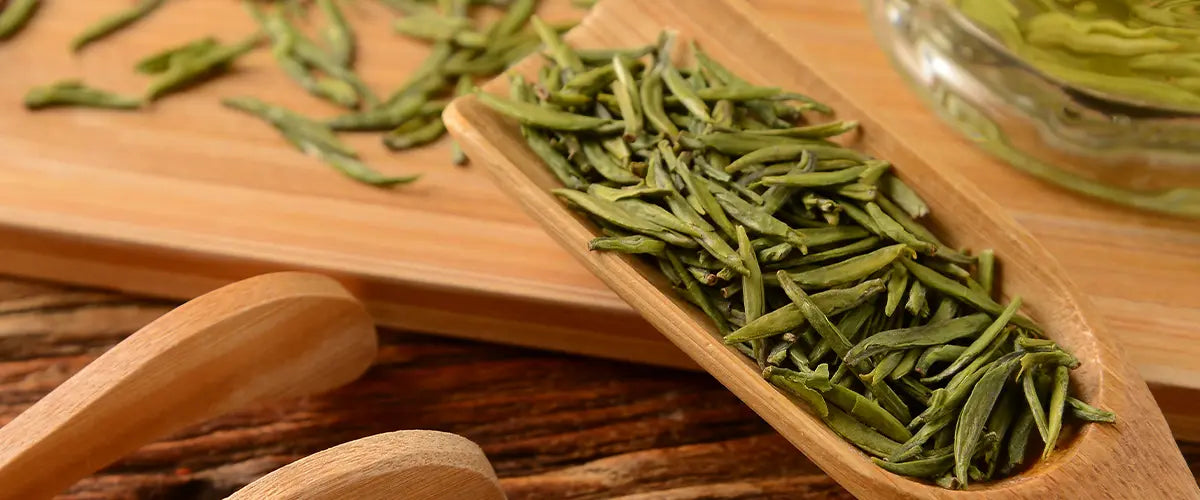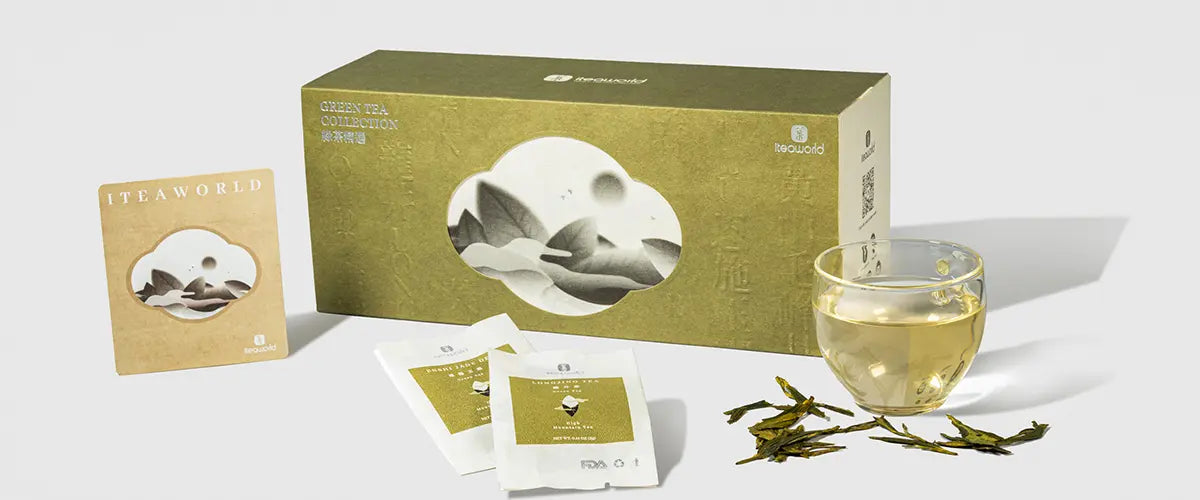Does Chinese Green Tea Color Your Teeth?
Many people wonder, does Chinese green tea color teeth?
If you regularly drink Chinese green tea and don't pay attention to dental hygiene, coloring of the teeth can indeed occur. In fact, not only Chinese green tea but also other Chinese teas like loose leaf black tea and loose leaf oolong tea can potentially color your teeth.
So, what's the key to Chinese green tea coloring teeth? It's dental plaque.
- Formation of dental plaque:
Loose leaf green tea contains a component called tannic acid, which binds with salivary proteins in the mouth to form an insoluble precipitate known as dental plaque.
Excessive and prolonged consumption of loose leaf green tea can lead to the gradual accumulation of dental plaque on teeth, resulting in coloring of the teeth.
How to Prevent Chinese Green Tea from Coloring Teeth?
If you want to have beautiful teeth and avoid coloring, does that mean you can't drink Chinese green tea?
Not necessarily. Some good habits can help prevent Chinese green tea from coloring your teeth.
- Rinse your mouth promptly after drinking tea: Rinsing your mouth promptly can significantly reduce the residual tannic acid in your oral cavity, thereby helping to reduce dental plaque on your teeth and maintain their whiteness.
- Regularly brush your teeth and use dental floss: Toothbrushes and dental floss can help you clean your teeth thoroughly and systematically on a daily basis, reducing the chances of dental plaque formation.
- Use a straw to drink tea:If you usually drink loose leaf tea from a large cup, consider using a straw. Straws can greatly reduce the contact between Chinese green tea and your teeth, thus reducing the possibility of teeth coloring from the source. If you're concerned about the environmental impact of disposable straws, there are many beautiful glass straws available for you to choose from.
- Avoid drinking strong tea: Strong tea contains higher levels of tannic acid, making it more likely to cause teeth coloring. Therefore, you can opt for brewing lighter green tea to reduce this effect.

Furthermore, even if drinking Chinese green tea accidentally colors your teeth, it's not a big issue. You can undergo regular teeth cleaning, and dentists can help remove short-term dental plaque caused by Chinese green tea.
In Fact, Regularly Drinking Chinese Green Tea Has Benefits for Teeth
- Reducing Bad Breath: Loose leaf green tea contains rich polyphenols. These polyphenols have certain antibacterial activity and a good inhibitory effect on bacteria like Streptococcus mutans, helping to eliminate unpleasant breath.
- Helping Prevent Periodontal Disease: Green tea contains abundant antioxidants such as catechins and epicatechins, which can help reduce bacteria on the surface of teeth and aid in preventing periodontal disease.
- Helping Prevent Cavities: Loose leaf green tea contains trace amounts of fluoride, which helps enhance the hardness and resistance of teeth, reducing the risk of cavities.
Chinese green tea not only benefits teeth but also has other health benefits such as antioxidant properties and beauty enhancement. Therefore, Chinese green tea is a great choice for healthy and delicious tea gift sets for family and friends. Besides Chinese green tea being suitable for gifting, Chinese oolong tea is also great to introduce to family and friends, as some of the best oolong tea come from China.
Find more loose leaf green tea with our Green Tea Sampler.>>>
Key Points for Healthy Consumption of Chinese Green Tea
Nutrients in green tea are prone to oxidation, so it's best to drink brewed tea as soon as possible to retain maximum nutritional value. Generally, green tea is not recommended for consumption after being brewed for 8 hours.
Avoid brewing green tea too strongly. Overly strong green tea not only increases the likelihood of coloring teeth but also contains more caffeine and tea polyphenols, which can cause discomfort to the heart.
Also, avoid drinking green tea on an empty stomach. Tannins and polyphenols in green tea can irritate the gastric mucosa, leading to stomach discomfort. People with weak stomachs should also be cautious about consuming too much green tea.
Understanding Chinese Green Tea and Choosing Your Favorite Tea
Chinese green tea has a long and rich history, dating back thousands of years, making it one of the oldest types of Chinese tea. Today, there are hundreds of varieties of Chinese green tea available. If you have the opportunity, you can try Chinese green tea using a loose leaf tea sampler.
If you want to experience the deliciousness of Chinese green tea, you can start with some of the most classic varieties: Longjing (Dragon Well), Biluochun (Green Snail Spring), Huangshan Maofeng, Taiping Houkui, Xinyang Maojian, and so on. Additionally, there's a special green tea that you shouldn't miss—Chinese Jasmine Tea.

Starting with these classic teas can help you understand the quality of best loose leaf tea and establish a good foundation for tea tasting from the beginning.
If you want to know more about Chinese green tea, you can start with its classification. According to the production process, Chinese green tea can be divided into four types: pan-fried green tea, oven-dried green tea, steamed green tea, and sun-dried green tea:
- Pan-fried Green Tea: Pan-fried green tea refers to the drying stage of green tea using a pan. Pan-fried green tea generally has a high aroma and a rich, mellow, and refreshing taste. Representing teas include Longjing (Dragon Well) and Biluochun (Green Snail Spring).
- Oven-dried Green Tea: Oven-dried green tea refers to the drying stage of green tea using an oven. Oven-dried green tea typically has a cleaner aroma and a smoother taste. Representing teas include Huangshan Maofeng and Taiping Houkui.
- Steamed Green Tea: Steamed green tea refers to the Killing Green stage of green tea using steam. Steamed green tea retains more chlorophyll, resulting in a green leaf appearance and a fresher and crisper taste. Representing tea is Enshi Yulu.
- Sun-dried Green Tea:Sun-dried green tea refers to the drying stage of green tea using sunlight. Sun-dried green tea has a lower and more muffled aroma, a strong taste, and a unique "sun-dried flavor." Representing teas include Dianqing and Chuanqing.

You can use a tea sampler to try different types of Chinese green tea made using different production processes and taste the differences in their flavors and aromas. You can try comparing and tasting two different types of teas with different techniques; trust me, it's quite interesting. You will marvel at the rich variations of Chinese green tea.
Lastly, remember to rinse your mouth and brush your teeth in a timely manner. While enjoying the deliciousness of green tea, let's maintain the whiteness and beauty of our teeth.











































































